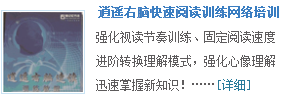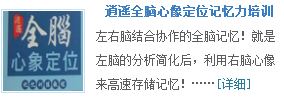一、整体设计思路
本节课选自模块五第五单元First aid,作为该单元第一课时,课型为阅读课,其中结合部分词汇呈现与处理。整节课的设计分为六个环节:
1. 在热身环节运用“头脑风暴”法,积极调动学生的词汇储备,回顾与本单元主题first aid相关的词汇。采用小组之间竞赛方式以及小组和教师竞赛方式,激活学生的词汇储备,并呈现部分与本单元话题相关的新词汇;
2. 在读前环节,由教师与学生分享一次自己被宠物狗咬伤后自己所做的急救,尽可能呈现阅读中出现的相关词汇,为学生消除阅读中的一些词汇障碍;
3. 在读中环节,利用阅读篇章的文体特点引导学生读title和subtitle,然后完成教材“理解”部分的第一题,使其从文章结构和篇章上大体掌握文章的主要内容,为细节阅读打下基础;
4. 在细节阅读环节,利用视觉和听觉的刺激激发学生阅读兴趣,帮助学生理解篇章内容,完成各种阅读活动,把握关键信息,并设计一些练习和活动帮助学生在语境中理解部分词汇的含义。最后,结合“理解”部分第二题和第三题的设计思路,提供情景让学生尝试判断烧伤级别并练习表达和模拟操作烧伤急救的步骤,将所学急救知识运用到实践中去。
5. 通过视频观看,回顾和总结本节课所学内容;
6. 布置课后巩固作业。
二、教学背景分析
教学内容分析:
这篇文章是一篇科普小短文,主要介绍烧伤与烧伤后的急救措施。文章语言朴素,句式简洁易懂,文章结构清晰,非常适合训练学生如何快速有效地获取有用的信息的能力。但是,文章中包含有一些与皮肤、医疗、急救相关的生词,可能会对理解造成一定的困难。因此,有必要在课堂上对文章中的部分词汇进行呈现或简单的处理,以便学生正确理解篇章的内容并将所学知识运用到实际生活之中。
学生情况分析:
所教授的学生是甘肃兰州一中高一年级普通班学生,授课时学生尚未结束必修四的学习,而本课是从必修五的第五单元挑选出来的,对学生具有一定的挑战性。兰州一中为甘肃省重点中学,学生英语基本功较为扎实,能够积极思考,并勇于表达。但大部分学生对急救知识并不了解,不具备基本的急救常识。因此,在课堂上需要充分利用急救话题的实用性特点激发学生的学习兴趣。
三、教学目标分析
通过本节课的学习,学生能够:
1. 了解关于烧伤的急救知识,并能够在实际生活中正确运用急救措施;
2. 用英语简单描述不同级别的烧伤特点,以及相应的急救步骤;
3. 在描述烧伤急救的过程中,能运用本单元所学的与主题相关的词汇进行口头表达;
4. 根据科普文的文体特点,使用略读(skimming)和寻读(scanning)的技巧掌握文章大意和各段要点。
为实现以上目标,教师需要:
1. 从知识目标的角度,通过各种方式呈现文章中与急救,尤其是烧伤急救相关词汇,包括学生讨论,教师点拨的方式训练学生根据上下文理解词义;
2. 从能力目标的角度,帮助学生形成有效的词汇学习策略和该文体文章的阅读策略;
3. 从情感目标的角度,通过学习急救知识,使学生在自己或者他人遇到紧急情况的时候能够积极正确的进行first aid。
四、教学重点、难点分析
教学重点:
根据科普文章的文体特点,把握篇章中的关于不同程度烧伤急救的重点信息,并内化为实践操作的能力。
教学难点:
由于对急救知识缺乏了解,加上阅读篇章中含有许多与急救知识相关的课标词和非课标词,可能会对学生阅读理解造成困难;另外,如何分辩不同程度的烧伤并根据情形采取不同急救措施,对于学生而言也存在一定难度。
五、教学过程设计
(Greetings)
步骤一:Warming up (4 mins)
1. Introduce the objectives of this period.
2. Introduce the topic “first aid” and ask the question: Can you think of any words related to the topic “first aid”?
3. Divide the Ss into several groups and give them two minutes to make a word list. After that, each group and the teacher must take turns to report the words. T takes notes on Bb.
设计意图:
开门见山的提出本节课课题,通过组与组竞赛的形式激活学生已有的相关词汇,通过教师和组之间的竞赛呈现出和本节课文章有关的词汇。
步骤二:Pre-reading (1 min)
Share with the Ss a piece of personal experience and point out the importance of first aid.
设计意图:
用教师自己的亲身经历引起大家的共鸣,同时尽可能多的在描述经历的过程中使用阅读中包含的词汇,通过肢体语言、图片等多种形式在读前呈现给学生,为阅读最大可能的扫清词汇障碍。
步骤三:Reading comprehension (27 mins)
1. Fast-reading (2 mins):
Ask Ss to read the title and the subtitles of the reading passage and finish exercise 1 on page 35.
设计意图:
让学生通过阅读文章标题和小标题来快速捕捉语篇大意是一种重要的快速阅读技巧,是skimming阅读策略的一种有效形式。这样做有利于培养学生快速阅读和有效获取语篇信息的能力。学生不仅能通过这个环节了解此类科普文章的文体特点,还可以在接下来的阅读环节中迅速确定最有用的信息。
2. Listening for details (2 mins)
1) Let Ss close the books and read the short paragraph shown on PPT.
2) Listen to paragraph 1 carefully and fill some blanks.
3) Check the answers.
The skin is an essential part of your body and its largest organ. You have three layers of skin that protect you against diseases, poisons and the sun’s harmful rays. It also keeps you warm or cool; it prevents your body from losing water; it is where you feel cold, heat or pain; and it gives you your sense of touch.
So, as you can imagine, if your skin gets burned, it can be very serious. First aid is a very important first step in the treatment of burns.
设计意图:
通过播放视频、听力材料一方面可吸引学生注意力,另一方面可帮助学生更好地理解课文内容,同时训练学生的听力技巧。让学生以不同感官参与语言学习,提高学生对语言的感知力和理解力。
3. Reading parts 2, 3, 4. (14 mins)
1) Give Ss 6 minutes to read parts 2, 3, 4 carefully and let them underline the important details and finish the table about three types of burns. (7 mins)
Types of burns
layers of skin affected
Causes
Symptoms
First degree burns
top layer
mild sunburn, burns caused by touching a hot pan, stove or iron for a moment
How it looks: dry, red, mildly swollen, turn white while pressed
Pain: mildly painful
Second degree burns
top layer and the second layer
severe sunburn, burns caused by hot liquids
How it looks: rough, red and swollen, blisters, watery surface
Pain: extremely painful
Third degree burns
three layers, tissue and organs under the skin
electric shocks, burning clothes, severe petrol fires
How it looks: black and white and charred, swollen, tissue can be seen
Pain: little or no pain if nerves are damaged; pain around the edge of injured area
2) Check the answers with Ss. Explain the new words shown in the table if necessary. (2 mins)
3) Choose some new words that Ss are not familiar with and let them guess the meanings of the words by discussing in groups. (The teacher will give some guidance group by group.) (3 mins)
4) Let Ss report their answers and if necessary, explain some difficult ones. (2 mins)
设计意图:
通过表格填写的方式培养学生信息转换的能力,使其能对篇章中的信息进行有条理的整理和归纳,掌握三种不同烧伤的特点和区别;同时通过表格填写强化学生对关键信息的捕捉和理解能力。教师通过不同方式来处理新词汇,鼓励学生猜词,帮助学生培养好的阅读习惯,为将来进行大量的英文阅读打下坚实的基础。
4. Reading part 5. (9 mins)
1) Let Ss read the last part and in groups find out the verbs as many as possible to retell the important steps for each type of burns. (5 mins)
2) Provide some situations for Ss to think about whether the treatments are properly operated or not. If not, let Ss correct them. (4 mins)
设计意图:
通过提供不同的急救案例,让学生根据自己对所读篇章内容的理解,判断急救步骤是否恰当,从而检验学生是否真正理解了关于急救的正确步骤。
步骤四:Post reading (8 mins)
Show some pictures about different degrees of burns, ask students to judge the degrees and choose the correct treatment for first aid to act out.
设计意图:
利用图片考察学生对不同程度烧伤的判断,巩固先前所学的关于烧伤症状的知识然后根据不同程度烧伤选择正确急救步骤并表演出来,考察学生将急救步骤知识转化为实践操作的能力。
步骤五:Summary (5 mins)
Enjoy the whole reading by watching a video to summarize what we learnt.
设计意图:
结合视频回顾整节课所学的内容以增强理解,加深记忆。
六、教学检测
检测内容:
1. What new words have you learnt? Make a list of your new vocabulary and pick out five of them to make some sentences.
2. How many degrees of burns are there? Can you describe each degree, using some adjectives?
3. What are the correct treatments for different degrees of burns?
检测方法:
课后练习;提供情景让学生写出正确的急救步骤。
本文来自:逍遥右脑记忆 http://www.jiyifa.com/gaozhong/114391.html
相关阅读:at all用法完全归纳



